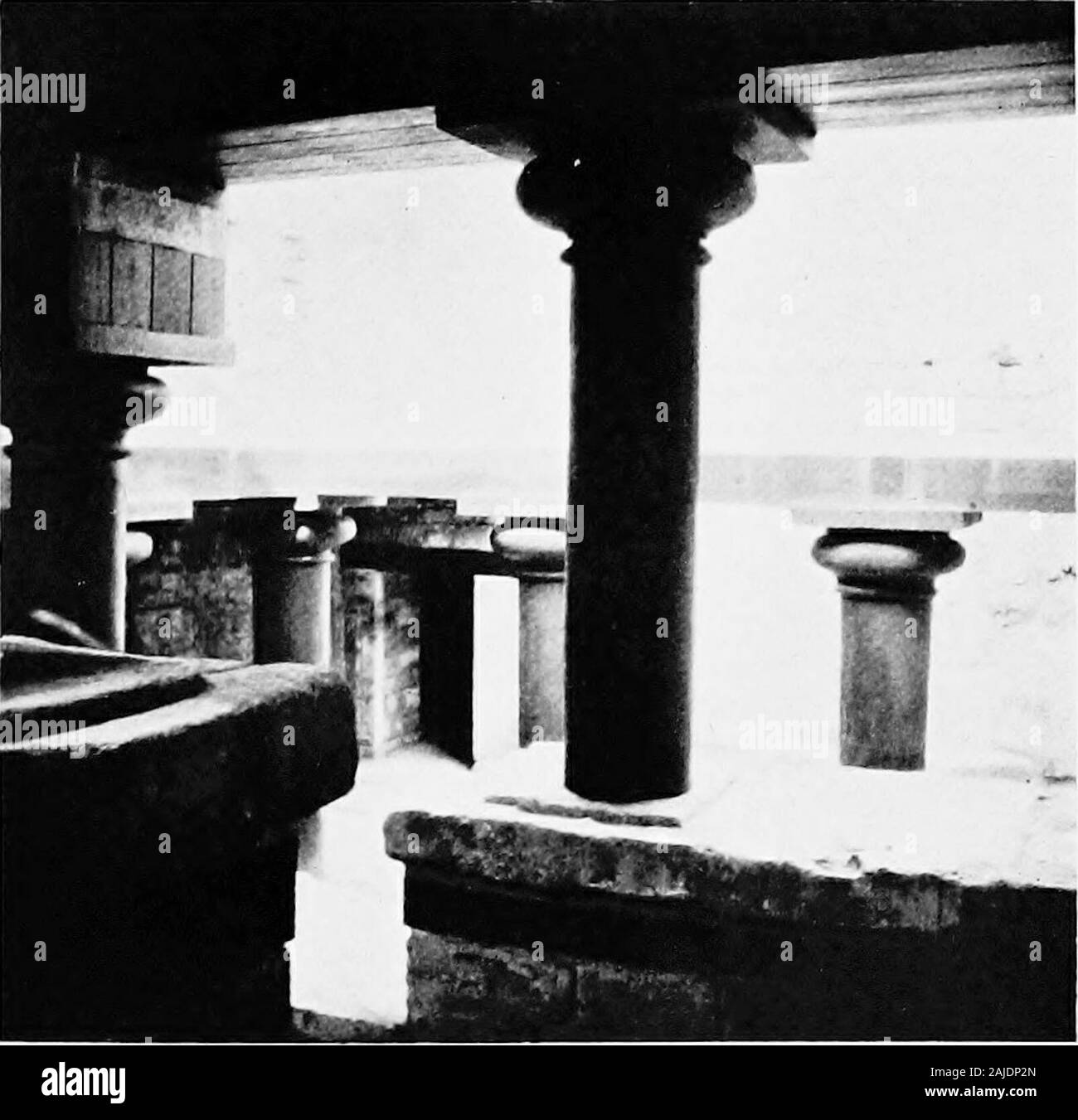Ægean archæeology; an introduction to the archæeology of prehistoric Greece . are Middle Minoan roomswhich were filled up with a sort of beton or concrete oflime, clay, and stones (called by the diggers acrrpaxa-cr^ea-Tov) when the theatral area was remodelled. AtHagia Triada too, there were Middle Minoan construc-tions before the palace was built, but we cannot say thatthere had been a regular palace there before the LateMinoan building. The main characteristics of Minoan palace-con-struction were the central courts, the fine broad stair-ways of low tread (the easiest stairways that ever onem

Image details
Contributor:
The Reading Room / Alamy Stock PhotoImage ID:
2AJDP2NFile size:
7.1 MB (215.6 KB Compressed download)Releases:
Model - no | Property - noDo I need a release?Dimensions:
1605 x 1557 px | 27.2 x 26.4 cm | 10.7 x 10.4 inches | 150dpiMore information:
This image is a public domain image, which means either that copyright has expired in the image or the copyright holder has waived their copyright. Alamy charges you a fee for access to the high resolution copy of the image.
This image could have imperfections as it’s either historical or reportage.
Ægean archæeology; an introduction to the archæeology of prehistoric Greece . are Middle Minoan roomswhich were filled up with a sort of beton or concrete oflime, clay, and stones (called by the diggers acrrpaxa-cr^ea-Tov) when the theatral area was remodelled. AtHagia Triada too, there were Middle Minoan construc-tions before the palace was built, but we cannot say thatthere had been a regular palace there before the LateMinoan building. The main characteristics of Minoan palace-con-struction were the central courts, the fine broad stair-ways of low tread (the easiest stairways that ever onemounted), open columned porticos, walls of rubble orof great stone blocks, set in a light clay mortar andplastered or faced with thin slabs of gypsum, passagespaved with the same thin slabs of gypsum, pilaster-bases, of the same gypsum, of double-T shape, round Jf.ATE XXr -•^^jjK^StSC^^Si jbL- y .^^^1 aj^jp^^f^l^-^ -^-tiacAiiwB !^mr t^^ -^Wef^ ?-?? .-J. .-^H^l ^SOHt ^SKlff^iir^^*^ m S%f;j V^-: ^^^^^^^B^^^^ y ^^l^^^^^^^^^^l m^ ^^^^p.^ft^tf^BiB^-^ts^^M^i^^^lp^^^^^^^^l. /?/;, ./, . //, //, KXOSS( )S 1. .Mai;azine v II IniH > 2. TiiK Great Siairuav TOWNS AND PALACES 121 pillar bases often o£ variegated marble, the charac-teristic light-wells, the careful drainage-system, and II ? [••• r^tir-f^_ jih.i^j^ 1 LEVEL PAKTIAL 5